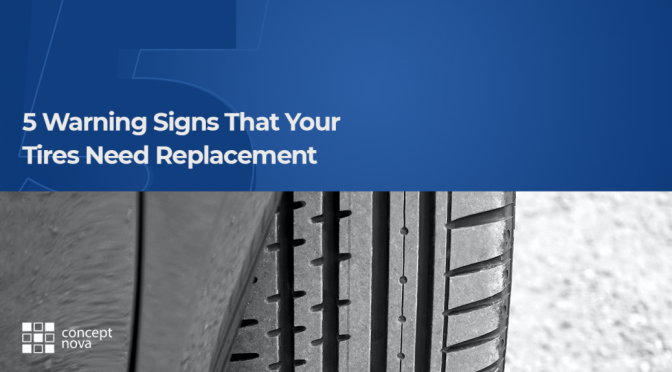In this post, we’ve listed 5 Warning Signs That Your Tires Need Replacement
As the human body loses steam and gets sore with time and age, especially when undergoing strenuous activities, so do the tires on your car take a beating every time you drive. Most times, this isn’t a sign of bad driving but rather an inevitable fact of life.
Nothing lasts forever and tires get old and worn out gradually from frequent usage. When a tire is at its worn-out stage it can pose a danger to you (the driver) and others on the road. This is why it is important to know when your tires are in bad shape so you can get new ones before something goes wrong.
The Tire Warning Light (5 Warning Signs That Your Tires Need Replacement )
For those with newer vehicle models – typically later than a 2008 model – you have a low tire pressure warning light system.
This is a little indicator that pops up on your dash and looks like a “U” with an exclamation point in the middle. It means that the tire pressure in at least one of your tires is too low based on the manufacturer’s recommendation.
When this happens, you either pump some air into your tires yourself or take it to a mechanic to figure out what the problem is.
Also Read: 4 WAYS TO CUT DOWN YOUR FUEL COSTS
Low Tire Tread
Tire tread is an incredibly important feature. It ensures your vehicle has traction, and poor traction will mean you are slipping and sliding over the road and get worse gas mileage.
The tread on your tires should never fall below 1/16 of an inch (1.6 millimeters) in depth. And if you regularly drive on slick, wet surfaces, you should have twice that much.
You can buy a gauge to measure the tread depth the way the professionals do or take it to the mechanic whenever you feel something is off.
Low tire tread could be extreme wear all around, or just on the outside or center of the tire. It can also be a sign of other problems, like over or underinflation, misalignment, or damaged tires.
Cracked Tires
In some cases, the sides of your tires can also be damaged. This will often look like little cracks or holes in the tire itself. Look for cracks or cuts in the sidewall — grooves that are distinct enough to be visible to the naked eye.
Cracked tires could be a sign that your tire is developing a leak or worse, that it’s nearly ready to blow out. This is something you want to avoid.
Cracked tires can also be the result of direct damage to the tire, such as hitting a pothole or curb. If the cracks in the sidewall are starting to look serious, get that car to a repair shop at the next opportunity and start talking about getting them replaced.
Wear On One Side
Tread wear on the center strip of the tire is a sign of overinflation, while wear on the edges shows underinflation.
Wear down on just one side could mean that your tires are nonaligned, with one edge hitting the road more of the time. It might also be a sign that you have damaged springs, ball joints, or other related parts.
When this happens, go straight to your mechanic and you may need to have the tires replaced, or an alignment performed.
Tire Vibration
A certain amount of vibration is inevitable when driving, especially on rough roads, but if you’ve been driving for a while, you probably know when something feels off.
There can be any of a number of causes for the vibration — maybe your tires are misaligned or unbalanced, or your shock absorbers are starting to go. But it could also indicate that there’s some sort of internal problem in the tire itself.
If your car vibrates weirdly, especially when you aren’t driving on bad roads, take it to the mechanic right away to have it checked out.
Your tires are some of the most important safety features on your vehicle. Even so, many drivers overlook the importance of high-quality, well-maintained tires. So, if you see any of these warning signs, talk to your mechanic right away.
https://guardian.ng/features/diesel-leakage-concept-nova-offers-fuel-control/


